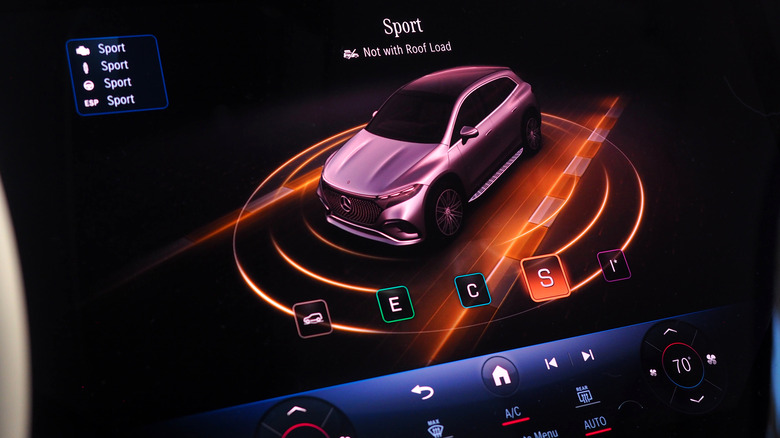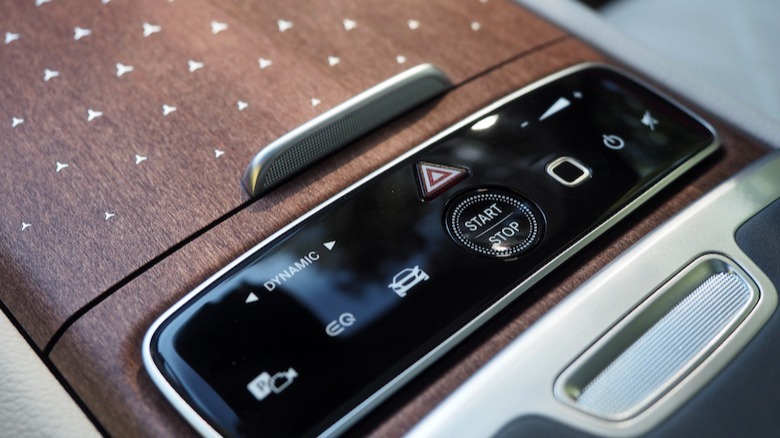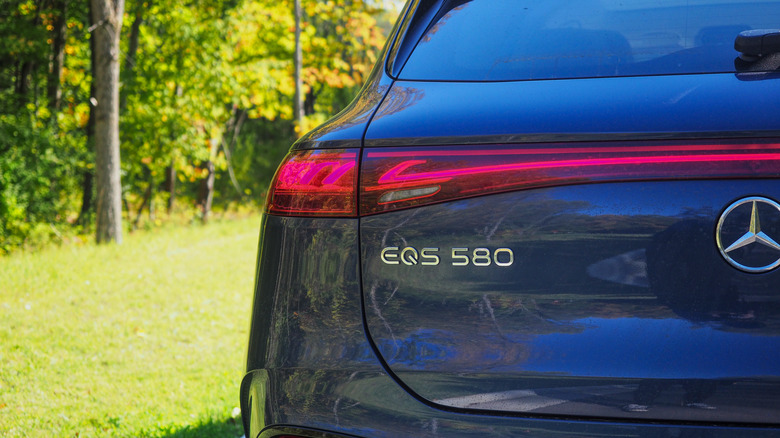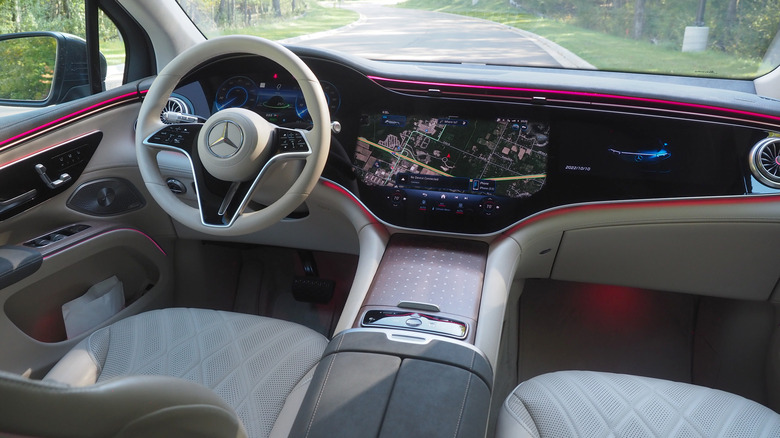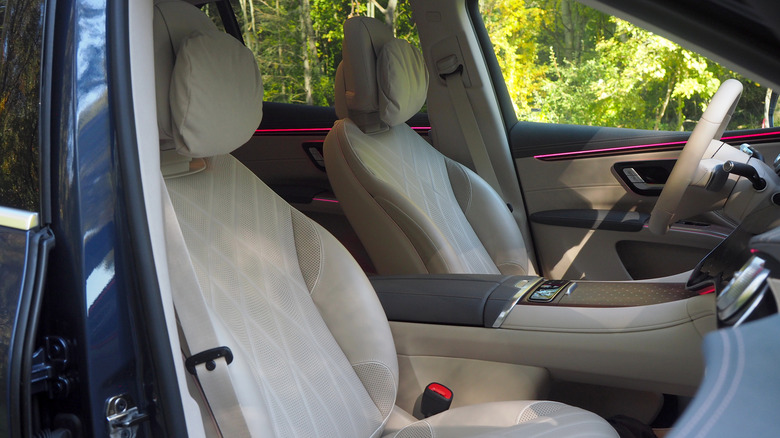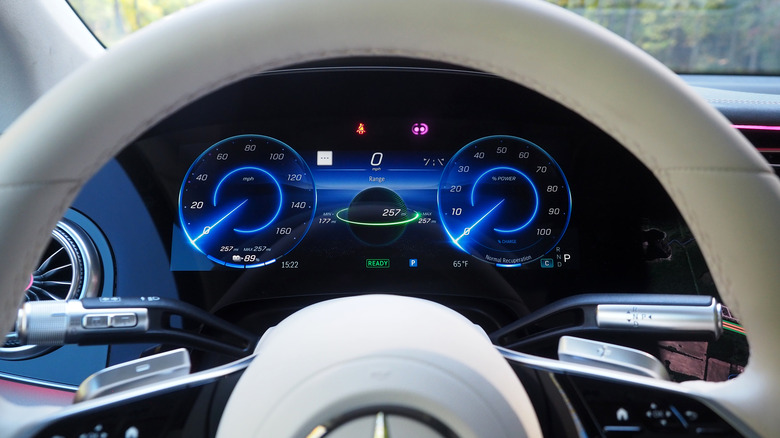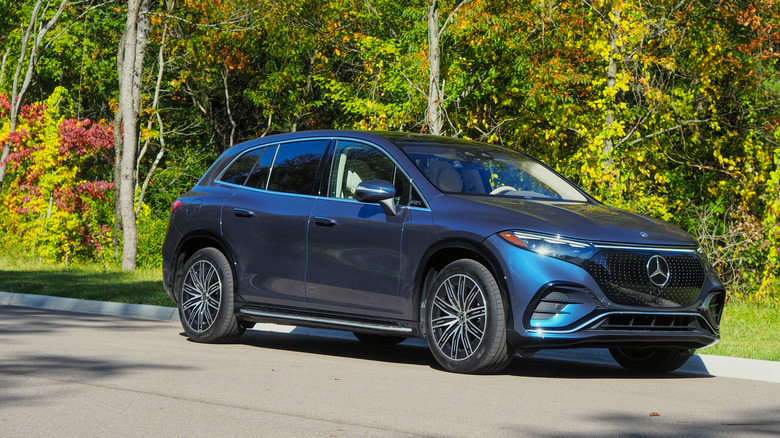2023 Mercedes-Benz EQS SUV Review: Electric Luxury Knows What Matters
- More flexible and capacious than EQS sedan
- Dual-motor powertrain is potent and refined
- Lavish cabin has plenty of gadgets
- Range can't match electric SUV rivals
- Expensive for 580 4MATIC trim
- Falls short on full practicality of gas SUVs
The tyranny of choice is coming to electric SUVs, and it's hard to be disappointed about that. Mercedes-Benz, like pretty much all of its mainstream automaker competitors, has seen a surge in SUV sales. It comes as little surprise, then, that fleshing out that range with electric options is a key priority.
At the top of the tree — at least, for now — is the 2023 Mercedes-Benz EQS SUV. As the name suggests, it's an SUV iteration of the EQS sedan that launched earlier this year, itself unofficially dubbed the "electric S-Class" as the automaker's gas line-up finds parity among its zero-emissions counterparts. The recipe, then, is fairly straightforward, though that's not to say following it successfully is an easy matter.
In fact, when you're paying upward of $126k for an EQS 580 4MATIC SUV, it's understandable that you'd be more than a little picky. Range, tech, and flexibility rule the roost here, and if there was ever a time when building an electric car was simply a matter of swapping out gas for e-motors, then those days are far behind us. Half-measures just won't do.
A smoother, swoopier SUV
It's an SUV, but it's not quite the aesthetic we've come to associate with the category. Traditionally, SUVs are big, practical, boxy things: think Mercedes' own GLE and GLC. The challenge here is that squared-off sides aren't exactly aerodynamically friendly.
The EQS SUV is, then, a softer version of the familiar design. Its slightly tapering roofline has hints of hatchback to it, even, though I doubt Mercedes' would appreciate my saying it. The super-smoothed detailing features — like the fared-in faux grille and sumptuous haunches — are carried over from its sibling sedan.
As a result, there's a little less practicality here than in the automaker's other big SUVs. The EQS SUV has seating for five or, optionally, seven; there's 23 cu-ft of cargo space with all the seats up, or 74 cu-ft with them all down. In contrast, a GLE has over 33 cu-ft of cargo space with all its seats up — a benefit of its upright rear glass — despite being over 7 inches shorter.
Six figures of SUV
Then again, I'd question whether people are buying an EQS SUV solely for practical purposes. Instead, it's a marriage of the increasingly-popular body style with the luxury of electrification that we've already seen used to good effect in the EQS sedan.
Pricing kicks off at $104,400 (plus $1,150 destination) for the 2023 EQS 450+ SUV, a single-motor, rear-wheel drive configuration. That has 355 horsepower, 419 lb-ft of torque, and a 0-60 mph time of 6.5 seconds; its 108.4 kWh battery is rated for 305 miles on the EPA's test cycle.
This particular version, however, is the EQS 580 4MATIC SUV, from $145,950 (plus destination). It adds a second electric motor, for all-wheel drive and a total of 536 horsepower and 633 lb-ft of torque. The 0-60 mph time drops, to 4.5 seconds, but then so does range. From the same size battery, you're looking at 285 miles.
Fast and a little fat
With numbers like that from the 4MATIC version, it's no surprise that the EQS SUV is genuinely fast. Like, potentially-embarrass-sports-cars fast, which is more than most SUVs can promise. The flip side is that it's also a heavy fellow.
It adds a few hundred pounds onto the heft of the EQS sedan, with a 6,228-pound curb weight. That's more, if you're curious, than a Ford F-150 Raptor R (5,950 pounds), a Cadillac Lyriq (5,915 pounds), or a Tesla Model X (5,390 pounds). As you might expect, that has an impact on driving dynamics.
Point the EQS SUV in a straight line, and it'll surge ahead with a pleasing thrum of instant torque. Mercedes' hushed cabin and the wafting-friendly standard air suspension add to the sense of isolated speed. No mess, no fuss, just the gap ahead of you rapidly disappearing.
In the corners, though, there are reminders of what you're driving. Mercedes wisely fits its excellent rear-wheel steering system as standard, the back set pivoting up to 10 degrees so as to dramatically narrow the turning circle of the EQS SUV. Even with the suspension set to its sportiest, however, there's still some body roll if you push hard, while the light steering means things definitely err on the comfort side.
For true practicality, gas still holds the lead
That's probably just what owners want, though, and you can probably say the same for the EQS SUV's off-road abilities. There's an Off-Road mode, which raises the air suspension by just shy of an inch, but perhaps more importantly it also finesses the power delivery to each wheel for more precise control.
Will most drivers be taking their six-figure luxury electric SUV to the nearest off-road course? I suspect not. The 3,500-pound towing capacity is likely to be more useful, though those regularly needing to shift trailers, horse boxes, or other large items may still — at least until the EQG "Electric G-Wagon" arrives in the not-too-distant future — want to look to Mercedes' gas-powered lineup. A GLS 450, for example, is rated for 7,700 pounds with its mild-hybrid inline-six.
No shortage of gadgets
Perhaps it's better, then, to think of the EQS SUV as an EQS with more of an emphasis on rear seat comfort. While the second row of the electric sedan is hardly spartan, its swooping roofline does eat into headspace. That's not something the SUV version will find complaints about.
As we've seen from other Mercedes models recently, the cabin is a cyberpunk neon playground with a heavy emphasis on in-your-face gadgetry. 64-color ambient lighting is standard on the Premium trim, with various color schemes and animated patterns. Driving the EQS SUV at night feels like drifting through a sea of electroluminescent jellyfish; subtle, it is not.
Neither is MBUX Hyperscreen. Also standard on the EQS 580 4MATIC SUV Premium trim — lesser models have more traditional screens and Hyperscreen as an option — it's actually three dashboard-spanning displays behind one single sheet of glass, and either the EQS SUV's crowning tech glory or a vast distraction, depending on your personal preferences. The huge, 17.7-inch central display floats widgets for things like charging, phone connection, and multimedia on top of a vast high-definition map, while the front seat passenger gets a dedicated touchscreen of their own.
How much geek drama do you want?
Necessary? Probably not, but Mercedes' software helps it feel a little less overwhelming. There are foibles, certainly — some of the buttons, like to return to Apple CarPlay, are oddly small given the amount of screen the UX designers had to play with — but persistent HVAC controls (dual-zone as standard, but here quad-zone as an $860 option) mean the most commonly-needed stuff is to hand.
If you can't find it, meanwhile, you can always ask for it. Mercedes' voice control system is one of the more effective ones on the market right now: you can say "Hey Mercedes..." and ask for everything from radio channels to seat massage. These features are part of the well-recommended $1,100 Front Multicontour Seats package which, after another $450, also gets rapid heating to go with their standard ventilation.
In short, it's all as lavish as you'd expect from the S-Class sedan's electric SUV cousin. That's a direction we've seen both Mercedes and BMW take with the segment, though those looking for something a little more restrained have options, too. The new Audi Q8 e-tron feels more like a regular SUV, while the cabin of the Rivian R1S — though clearly still gadgety — is nowhere near as tech-overt as the EQS SUV.
Not the longest range, but accurate estimates
As for charging, there's support for up to 200 kW DC fast charging. That should mean a 10-80% top up takes around 31 minutes, assuming you can find a suitably-potent charger.
That's fast, though not the fastest we've seen. It puts Mercedes in the middle of the luxury EV set, though range isn't quite as competitive. A BMW iX xDrive50, for instance, is rated at 305 miles; the Rivian R1S is pegged at 316 miles. Tesla's Model X could do up to 348 miles, according to the EPA.
The good news is that the EQS SUV's numbers seem to match in practice to what the dashboard calculates — which is more than can be said for some other electric vehicles — and of course, most EV charging still takes place at home (or at work). That said, Mercedes charging $250 for the 110V charging cable seems a little miserly when other automakers are bundling Level 1/Level 2 travel chargers with their cars.
2023 Mercedes-Benz EQS SUV Verdict
With extras and destination, meanwhile, this $125,950 SUV clocks in at $132,880 altogether. That's a decent premium over most rivals, though with the luxury electric SUV space still being so new, finding a direct competitor isn't quite as straightforward as with, say, Mercedes' internal combustion range.
What the 2023 EQS SUV does do, though, is distill a whole lot of what people like about those ICE models into a single, very compelling package. No, it may not be the fastest electric SUV, nor have the longest range, but it's not hard to see how Mercedes' blend of comfort and tech would appeal to its existing owners looking to go EV for the first time. Brand cachet, overall build quality, and attention to detail could easily sway some electric skeptics, too.
Even if it doesn't — even if it's too expensive, or lacks range, or any of the other reasons that potential buyers might have to hold out — the reality is that Mercedes is busy filling in the big electric SUV gap between the diminutive EQB and this lavish flagship. Just as we've seen with the EQE sedan, it's not outlandish to predict that the upcoming 2024 EQE SUV could hit the sweet spot for price and capability. That is, assuming you're not holding out for an EQG.



